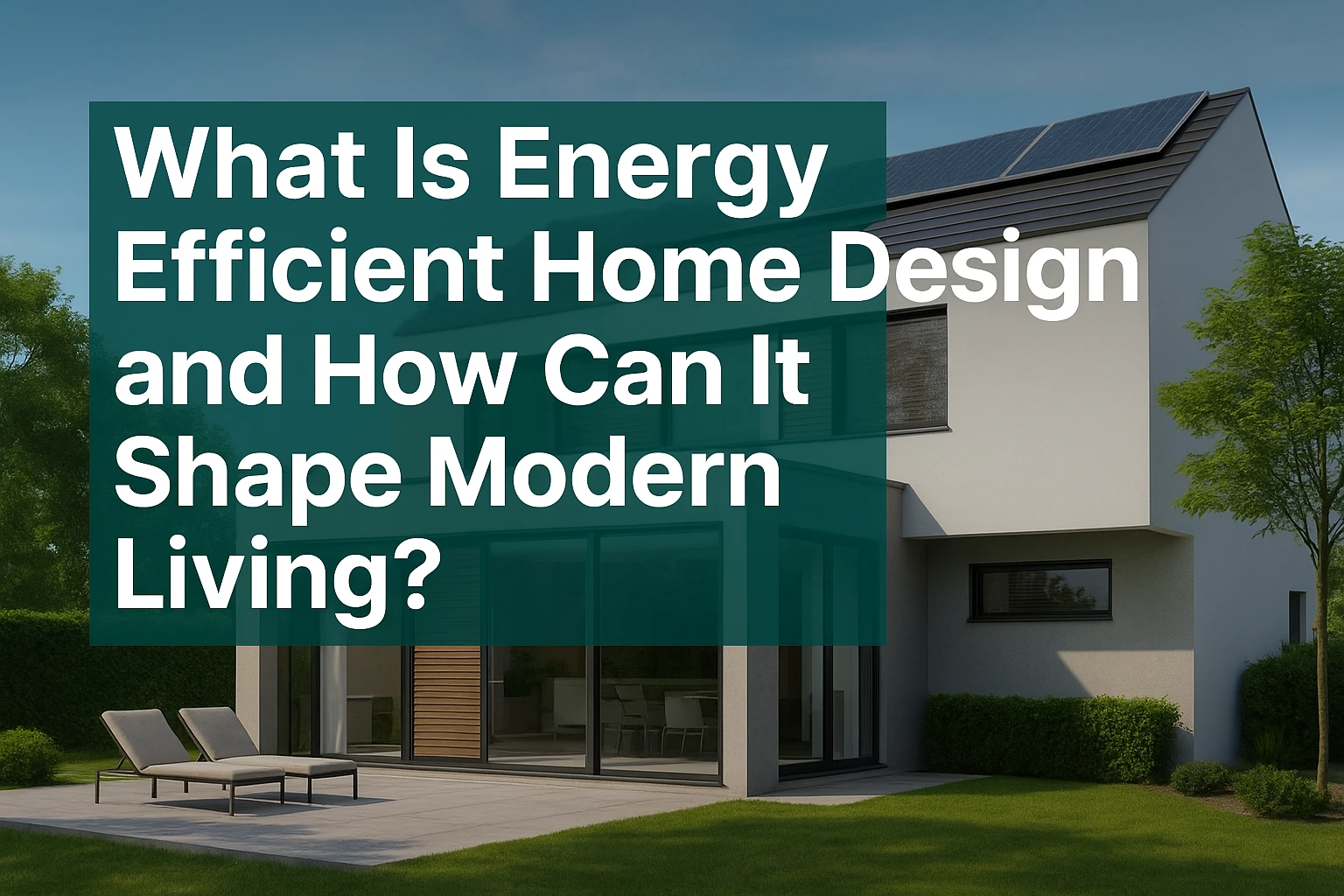
What Is Energy Efficient Home Design and How Can It Shape Modern Living?
Modern life is changing quickly. People are looking for homes that are not only stylish but also smart, sustainable, and cost-effective. One of the most important ideas in today’s housing industry is energy-efficient home design. But what does it really mean? And how does it shape the way we live today?
In this complete guide, we will explore how energy-efficient homes work, the key elements that make them successful, and why they are the future of modern living.
What Is Energy-Efficient Home Design?
Simply put, energy-efficient home design focuses on reducing energy consumption while maintaining comfort, functionality, and sustainability. It uses a smart combination of:
Smart architecture (designing homes in a way that uses natural light, airflow, and orientation)
High-performance materials (insulated walls, energy-efficient windows, and eco-friendly building supplies)
Natural resources (solar power, rainwater harvesting, cross-ventilation, and daylight optimization)
The goal is to reduce energy usage while keeping the home comfortable and modern.
Instead of depending only on air conditioners, heaters, or artificial lighting, energy-efficient homes are built to naturally regulate temperature and light. This results in lower energy bills, healthier indoor spaces, and a positive impact on the environment.
Why Is Energy-Efficient Design Important in Modern Living?
Modern living is not only about luxury. It is also about being responsible. Energy-efficient homes help in three powerful ways:
Lower Utility Costs
By using less electricity and water, homeowners save a significant amount of money every month.Enhanced Occupant Well-being
Natural light, fresh air, and eco-friendly interiors create a healthy and happy environment.Environmental Sustainability
Every energy-efficient home reduces carbon footprints and contributes to a cleaner, greener planet.
This combination makes energy-efficient homes the foundation of modern sustainable living.
Key Features of an Energy-Efficient Home
To understand how these homes really work, let’s look at the major features that make them stand out.
1. Smart Architecture and Orientation
Positioning windows for maximum sunlight
Designing rooms for natural cross-ventilation
Using open layouts to reduce artificial lighting needs
2. High-Performance Materials
Double or triple-glazed windows
Insulated roofing and walls
Non-toxic paints and eco-friendly building supplies
3. Energy-Efficient Appliances
Smart refrigerators, washing machines, and lighting systems
LED lights instead of incandescent bulbs
Energy Star-rated products that consume less electricity
4. Renewable Energy Sources
Solar panels for power
Solar water heaters
Wind energy (where possible)
5. Water Efficiency
Rainwater harvesting systems
Greywater recycling
Smart irrigation systems
6. Smart Home Technology
Automated thermostats
Voice-controlled lighting and security systems
Sensors that turn off lights and devices when not in use
How Energy-Efficient Design Shapes Modern Living
Energy-efficient homes are not just about saving energy. They completely transform the lifestyle of modern families.
Financial Savings – Lower energy bills free up money for other priorities.
Comfortable Living – Homes stay cool in summer and warm in winter without excessive energy use.
Smart Lifestyle – With automation and smart devices, life becomes easier and more connected.
Healthier Environment – Cleaner air and natural light improve physical and mental health.
Future-Proof Living – As energy prices rise, these homes stay affordable and sustainable.
In short, energy-efficient home design is reshaping the idea of modern living by blending style, comfort, and responsibility.
Voice Search Friendly FAQs
To optimize for voice search, here are some natural questions people ask and their simple answers:
Q. What is an energy-efficient home?
Ans. An energy-efficient home is designed to use less energy while keeping the space comfortable, functional, and sustainable.
Q. How can I make my home more energy efficient?
Ans. You can add insulation, use LED lights, install solar panels, and design your home to get more natural light and air.
Q. Why are energy-efficient homes better?
Ans. They save money on bills, improve your health with natural living conditions, and help protect the environment.
Q. Do energy-efficient homes cost more to build?
Ans. Yes, the initial cost may be slightly higher, but the savings on bills and maintenance make it cheaper in the long run.
Q. Can energy-efficient homes improve my lifestyle?
Ans. Yes! They reduce stress about bills, keep you comfortable, and provide a modern smart-living experience.
Benefits of Choosing Energy-Efficient Home Design
Saves Energy and Money – Cut electricity and water bills.
Eco-Friendly – Reduces carbon footprint.
Better Quality of Life – Natural lighting and ventilation.
Modern Appeal – Smart technologies and stylish designs.
Higher Property Value – Energy-efficient homes are in demand.
Final Thoughts
Energy-efficient home design is not just a trend. It is the future of housing and modern living. By combining smart architecture, high-performance materials, and renewable resources, homeowners can enjoy lower costs, better health, and sustainable lifestyles.
Whether you are planning a new home or renovating an old one, adopting energy-efficient design will make your living space smarter, greener, and future-ready.
👉 Architecture Consultant is the best architectural design company in Dehradun.
